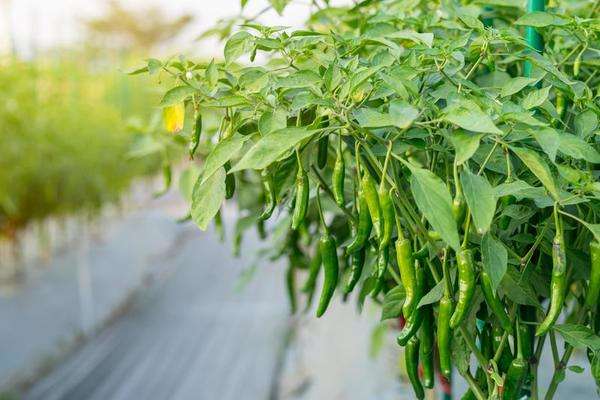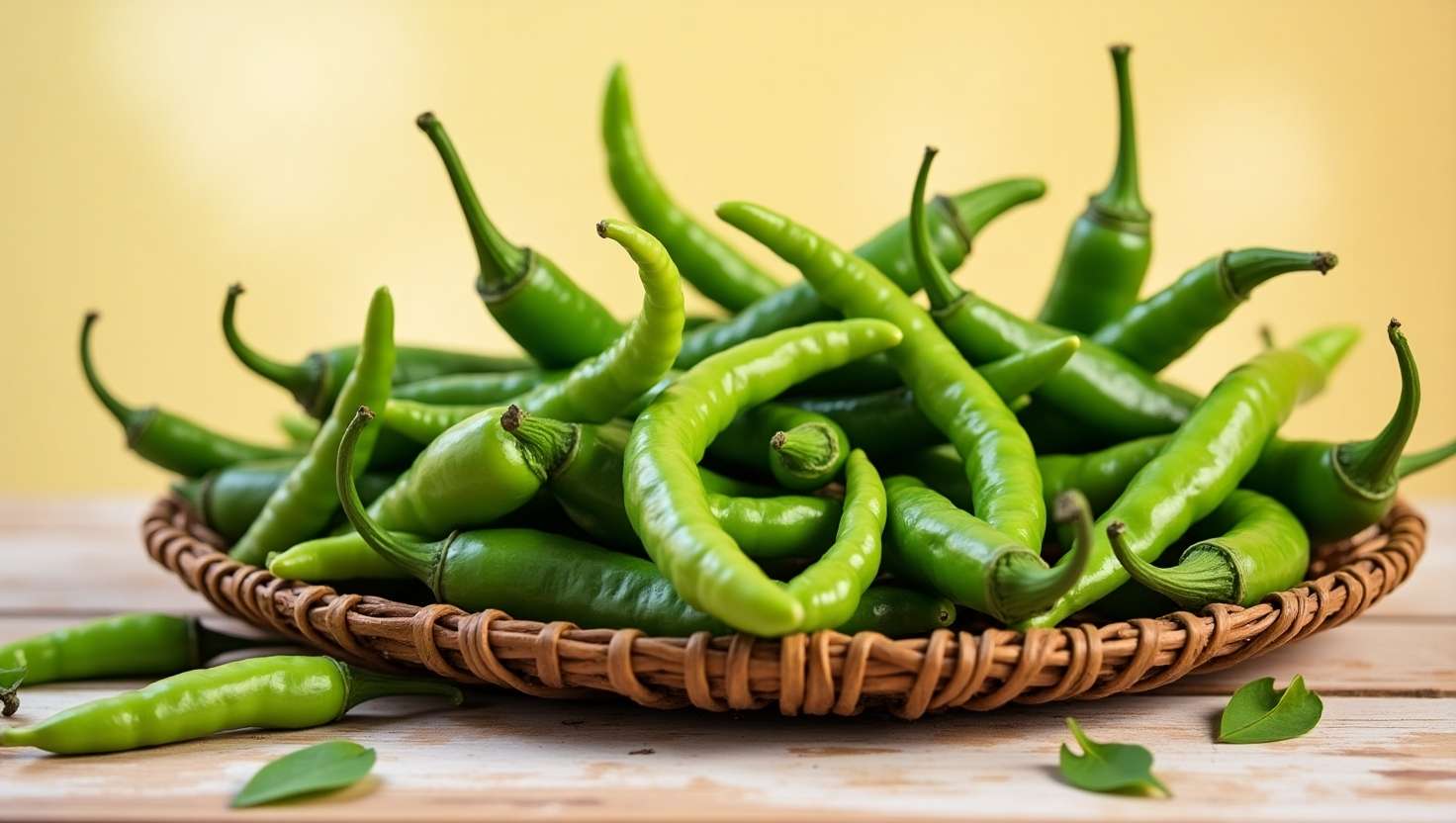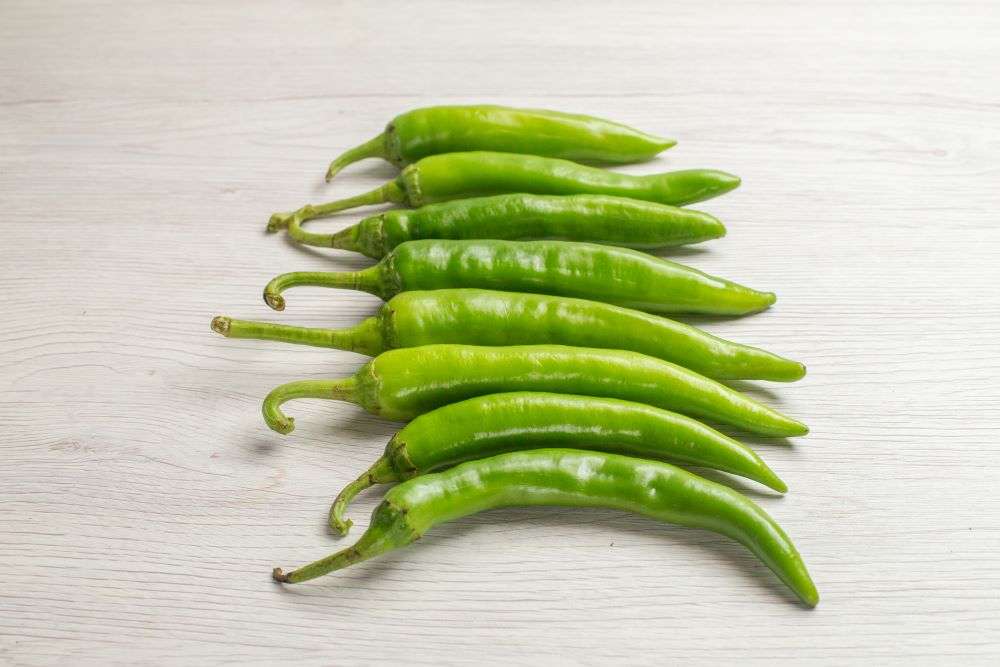India is renowned for its rich agricultural heritage and diverse array of produce. Among its many offerings, green chili stands out as a vibrant and versatile crop with a growing presence in international markets. In this blog, we will delve into the exciting world of green chili exports from India, exploring the various varieties, the factors driving its global demand, and the key points that contribute to its success.
Varieties of Green Chili
India boasts an impressive array of green chili varieties, each with its unique flavor, appearance, and level of spiciness. Some of the most popular varieties include:
- Jwala Chili: Known for its slender shape and fiery heat, Jwala chili is a favorite in Indian cuisine. Its bright green color and intense spiciness make it a popular choice for curries, pickles, and chutneys.
- G4 Chili: A hybrid variety, G4 chili is characterized by its high yield and uniform size. It has a moderate level of heat and is often used in both fresh and dried forms.
- Kanthari Chili: Also known as bird’s eye chili, Kanthari chili is small but packs a punch. It is commonly used in South Indian dishes and is prized for its pungent flavor.
- Bhut Jolokia (Ghost Pepper): One of the hottest chilies in the world, Bhut Jolokia is not for the faint of heart. It is used sparingly in dishes that require an intense level of heat.
Factors Driving Global Demand for Indian Green Chili

- Quality and Flavor: Indian green chilies are celebrated for their exceptional quality and distinctive flavor profile. The rich soil, favorable climate, and traditional farming practices contribute to the superior taste and aroma of Indian chilies.
- Versatility: Green chili is a versatile ingredient that adds a spicy kick to a wide range of dishes. From curries and stir-fries to sauces and salads, its ability to enhance the flavor of various cuisines has made it a sought-after product in international markets.
- Health Benefits: Green chilies are rich in vitamins, minerals, and antioxidants. They are known to boost metabolism, aid digestion, and promote heart health. The growing awareness of these health benefits has increased the demand for green chilies globally.
- Culinary Trends: The rising popularity of global cuisines and the increasing interest in spicy foods have contributed to the growing demand for green chilies. Chefs and home cooks alike are incorporating green chilies into their recipes to add depth and complexity to their dishes.
Impact on Farmers and Local Communities
The surge in green chili exports from India has had a significant impact on farmers and local communities:

- Economic Benefits: The increased demand for green chilies has provided farmers with higher income opportunities, improving their standard of living.
- Employment Generation: The green chili export industry has created employment opportunities for local communities, from farming and harvesting to processing and packaging.
- Empowerment of Women: Many women are involved in the cultivation and processing of green chilies, providing them with financial independence and contributing to gender equality in rural areas.
- Skill Development: Farmers are gaining new skills and knowledge through training programs and exposure to international markets, enhancing their farming practices and productivity.
Sustainable Practices in Green Chili Export

- Organic Farming: Embracing organic farming practices can enhance the quality and appeal of green chilies in international markets. Organic produce is free from synthetic chemicals, making it a healthier and more environmentally friendly option for consumers.
- Water Conservation: Implementing water-efficient irrigation techniques can help conserve water resources and ensure the sustainable cultivation of green chilies. Drip irrigation and rainwater harvesting are effective methods to optimize water use.
- Soil Health Management: Maintaining soil health through crop rotation, cover cropping, and the use of natural fertilizers can improve the yield and quality of green chilies. Healthy soil is essential for sustainable and resilient agriculture.
- Waste Reduction: Reducing waste at all stages of the supply chain, from farming to packaging, can minimize the environmental impact of green chili exports. Composting organic waste and using biodegradable packaging materials are effective strategies.
- Fair Trade Practices: Ensuring fair wages and working conditions for farmers and laborers involved in the green chili supply chain can promote social sustainability. Fair trade certification can also enhance the marketability of green chilies in international markets.
India has started exporting green chilies to Bangladesh through the Hili international border in South Dinajpur district, with around 200 metric tons being shipped daily. This has positively impacted local farmers by increasing green chili prices.
– Millennium Post
Indo Foods Export: A Global Indian Exporter
Among the many contributors to India’s agricultural export success, companies like Indo Foods Export play a crucial role. They are dedicated to bringing high-quality Indian produce, including green chilies, to a global audience. With a focus on stringent quality control, reliable supply chains, and adherence to international standards, Indo Foods Export exemplifies the commitment to excellence that is driving India’s agricultural exports forward. By connecting Indian farmers with international markets, they facilitate the distribution of fresh and flavorful produce, ensuring that consumers around the world can experience the authentic taste of India.
The journey of India’s green chili exports is a compelling story of agricultural excellence meeting global culinary demand. With its diverse varieties, unmatched flavor profiles, and increasing recognition for health benefits, Indian green chilies are firmly establishing themselves as a cornerstone in kitchens worldwide. The success of this sector hinges on continued focus on quality, sustainable farming practices, and strategic market penetration. By fostering strong international partnerships, embracing technological advancements, and leveraging supportive government initiatives, Indian exporters are ready to further capitalize on the burgeoning global appetite for these fiery delights. As the world embraces the vibrant spice of Indian green chilies, the future of this export sector burns bright, promising sustained growth and prosperity for Indian farmers and exporters alike.





